Close Encounters On The Wallace Line
Original article was published on beBEE by Paul Walters

Paul v Walters is the best selling author of several novels. When he is not cocooned in sloth and procrastination in his house in Bali he also scribbles for several international travel and vox pop journals.
For the last few years I have found myself in the rather privileged position of having an opportunity to spend extended periods of time on the exotic island of Bali.
This small dot is part of the greater Indonesian archipelago and has, in recent years become one of the world’s ‘hot spots’ when it comes to tourism. Approximately 6.3 million Indonesian and 3.8 million ‘foreign’ devils arrive each year to soak up the sun, the culture and everything else this wonderland offers.
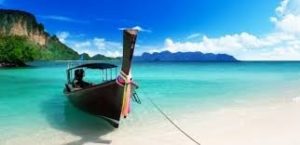
For many, the lure of Kuta, Legian and Seminyak keep the visitors happy and many seldom venture forth to explore the diverse cultural and varied landscape that the island and its surrounds offer.
This diatribe will not dwell too much on Bali, but rather concentrate on one of the most unusual phenomena’s on the planet which occurs just 12 miles offshore between the islands of Bali, Nusa Penida and Lombok.
In 1857 Phillip Lutley Sclater a little known 28-year-old explorer delivered a paper to the Linnaean Society, the highly respected biological society headquartered within the hallowed halls of Burlington House in London’s Piccadilly.
What he presented that winters night to the staid audience was a startling discovery that would, in years to come spur Darwin to expound his theory of evolution and provide the inspiration for his findings as written in his “The Origin Of the Species.”
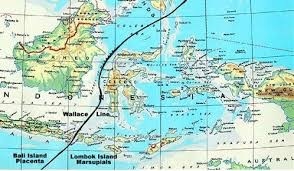
Sclater’s paper covered much of what he had observed in the East Indies. His ‘discovery ‘ seemed to indicate that there was a rigid geographical fissure deep within the waters that surrounded the islands spanning the archipelago.
This was a ‘eureka’ moment and it led him to trace this ‘line’ along the 2000 mile volcanic chain, stretching from Sumatra to the Trobriand Islands.
Today this route is commonly referred to as,” the ring of fire”.
He found that the jungles west of the invisible line supported birds that were akin to those found in India while those to the east were alive with avian fauna only to be found in Papua, Sulawesi and the multitude of islands that make up Indonesia’s archipelago. This also extended to The Torres Strait Islands and Australia. However, between the islands of Bali and Nusa Penida (just 15 miles apart) he noted that even here the species were entirely different.
Cockatoos, parrots and thrushes are in abundance on Lombok and Penida, yet across a narrow stretch of water, on Bali there were none!
On Bali, woodpeckers, barbets, paradise flycatchers and paradise shrikes and scores of other birdlife thrive yet none of these birds cross the invisible line and the short distance that separates the islands.
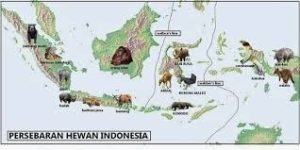
At the time of Sclater’s presentation, one Alfred Russell Wallace was rather taken with this theory and set out for Java to make his own observations. Within a year he concurred with his predecessor and expanded on Sclater’s findings.
Carefully documenting everything he saw and collecting thousands of species of fauna and flora he was able to present his findings to the London society who embraced it with gusto.
One should really feel a little sorry for Mr. Sclater, as the initiator of the study as he was consigned to second place and it was Wallace’s findings, which were widely adopted. The most significant geographical discovery of all time now bears his name.
The Wallace Line.

The ‘line’ begins south of the island of Mindanao in the Philippines and snakes in a seemingly haphazard fashion to the north of the oddly shaped Indonesian island of Sulawesi and beyond. But nowhere is it closer to two landmasses than those of Bali and Lombok.
The differences are startling for, not only do the changes apply to the birds but more importantly it applies to the mammals the flora and the teaming marine life as well.
Tourists delight in the antics of the monkeys in Ubud and elsewhere on Bali, yet none are to be found in Lombok or indeed anywhere else east of the line. The vegetation is strikingly different with Bali enjoying lush tropical forests while Lombok’s flora is much drier and scrubbier.
What caused this amazing phenomenon; the most uncertain of sciences was and is the shifting of tectonic plates. The powerful and constant movement of the seabed has a direct correlation to the Darwinian theory of the ‘survival of the fittest” that is the building block for the advent of evolution.
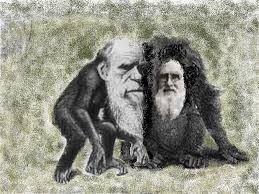
Birds, mammals and fauna developed in vastly different ways on each side of this geographical fault line. To the east are found unusual creatures such as kangaroos and the oddly ‘constructed’ duck billed platypuses, while on the west, tigers, elephants, buffaloes and vast number of other species flourish.
Now, this would not be so unusual if say the line separated the Americas and Europe, which as we know are divided by a vast body of water measuring several thousand miles.
But, fifteen miles? It’s almost too much to comprehend.
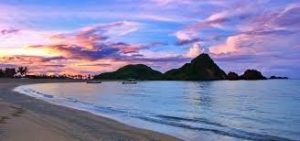
So those brave and inquisitive tourists who do venture from Bali to Lombok often do not realize that on their short boat trip they will cross the Java Trench, one of the deepest channels of water on earth at some 2500 feet which is at the heart of the Wallace Line.
Travellers ignore this invisible barrier, which even the fish seem not to cross, with gay abandon, keen to get to the beaches of Gili and Lombok and yet the body of water beneath their feet has played a crucial role in their evolution.
Fascinating, is it not?
Many statistics in this piece are from Simon Winchester’s extraordinary novel, ” Krakatoa, The Day The World exploded”

About the Author
Paul v Walters is a best selling author of several novels and ,when not cocooned in sloth and procrastination in his house in Bali he scribbles for several leading travel and vox pop journals.
His latest offering Scimitar launched in August 2016 is now in wide release.